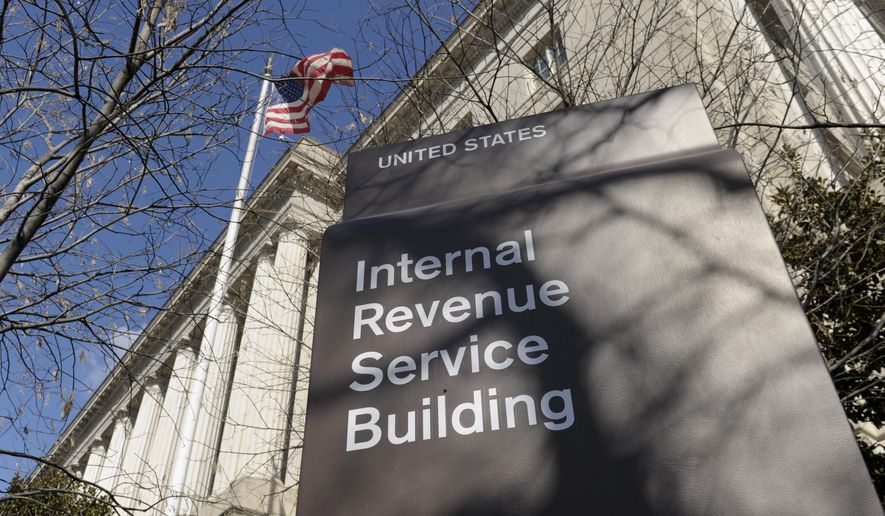The IRS is leaving tens of billions of dollars on the table by not pursuing wealthy Americans who fail to file their taxes, according to a striking new inspector general’s audit Monday that said the tax agency left “hundreds of thousands” of cases unaddressed.
Each of the cases involved someone with an income thought to be at least $100,000 in a particular year but who never filed a tax return.
Based on the Treasury Inspector General for Tax Administration’s review of 2014 to 2016 data, the IRS didn’t even bother to send a delinquency notice in more than one-third of the cases. And even when it did, the likelihood that it would pursue those cases is low.
“High-income nonfiler cases are being shelved,” the inspector general said.
All told, those high-income nonfilers owed an estimated $45.7 billion in taxes over the three years of the study, the audit found. The top 100 nonfilers alone accounted for nearly $10 billion.
Yet it should be easy to get some of that money, the inspector general said.
“Pursuing nonfilers is one of the IRS’s most efficient enforcement strategies because issuing nonfiler notices can be a cost-effective tool that requires little more than automated notices,” the audit concluded, adding that the IRS used to invest in that effort, but “that no longer appears to be the case.”
The tax agency pleaded poverty, saying budget cuts at the beginning of the past decade, combined with an aging and retiring workforce, have left it too strained to be able to go after all the cases it should.
“The issues TIGTA found in this audit are reflective of the resource challenges the IRS has faced in recent years,” wrote Eric C. Hylton, commissioner for the IRS’s small business/self-employed division, in the agency’s official response.
He said that over the past decade the agency has lost nearly one-third of its enforcement personnel, including more than half of the collection officers who worked complex cases.
That meant making hard choices about which cases to pursue — though the IRS says over the past couple of years it has pumped money into the nonfiler program, and saw delinquency collections rise 33% from 2018 to 2019.
Sen. Ron Wyden of Oregon, the top Democrat on the Senate Finance Committee, which oversees the IRS, blamed Republicans for taking a hatchet to the IRS’s budget after the GOP won control of the House in the 2010 elections, and in the wake of the tea party targeting scandal.
He said the IRS compounded the problem by refusing to pursue the cases. “The IRS needs historic investments to address this crisis,” he said.
Not filing a tax return when required to do so is a federal crime, but it’s also stunningly common. The inspector general said there were about 6 million nonfilers in 2012, surging to more than 10 million by 2016.
The IRS is able to spot nonfilers by tracking business income, third-party reporting or tracking previous years’ returns.
In theory, they are supposed to be priority cases, with delinquency notices, collections and possibly criminal investigation all resulting.
But the audit looked at nearly 880,000 cases from 2014 through 2016 and found in 37% of them, the IRS never even sent delinquency notices. Investigators estimated those cases accounted for $15 billion in potential unpaid taxes.
Another 5% of cases were sent notices and were put into the system, but were closed out “without being worked,” the audit found. Those totaled $3.4 billion in potential unpaid taxes.
The other cases were still open in 2018, but most of them will be shelved without pursuit because of tight resources, the investigators said. They account for about $25 billion more in potential unpaid taxes.
The inspector general said going after the worst cases should be easy — and profitable. It identified about 1,900 nonfilers who owed at least $1 million each. Combined, they owed an estimated $13.5 billion in unpaid taxes from 2014 to 2016.
Investigators also said the IRS, when it does pursue a nonfiler, only looks at a single tax year, even if the person is a repeat offender. That may make sense in lower-dollar cases, but not at higher levels of tax arrears, the audit said.
And despite a general policy allowing delinquent cases to be pursued for six years, the IRS was shelving some cases after less than a year in order to cut its inventory, the audit found.
“It is concerning that high-income nonfilers, which are high-priority cases, are being shelved, especially when these cases are not six years old,” the inspector general wrote. “By shelving high-income nonfiler cases, the IRS may miss opportunities to bring these taxpayers back into compliance, resulting in the potential loss of billions of dollars in revenue.”
The audit recommended designating a senior official to oversee high-income nonfiler cases, elevating it as a priority.
The IRS disagreed, saying it’s comfortable with its steering committee approach.
The IRS did agree to study how it deploys resources, and said it will go back and review the top cases from 2016 through 2018.
Mr. Hylton said in his official response that the IRS is also surging compliance officers to specific areas where they have too few people, and they will begin to focus on high-income nonfilers this year.
• Stephen Dinan can be reached at sdinan@washingtontimes.com.




Please read our comment policy before commenting.